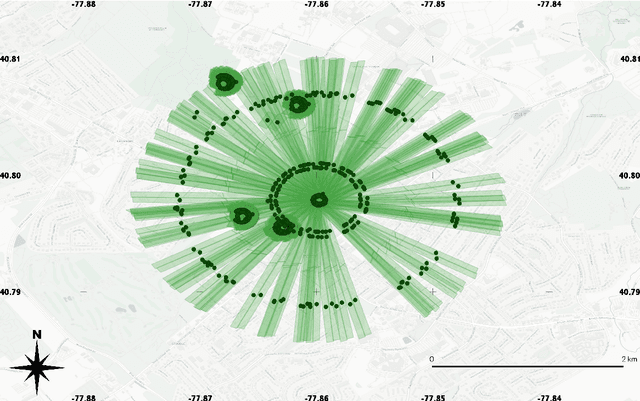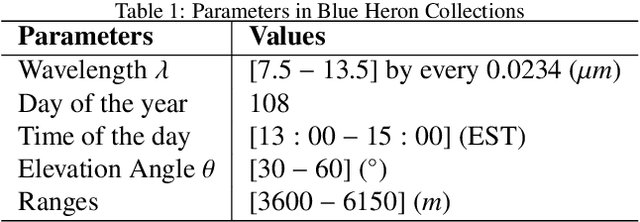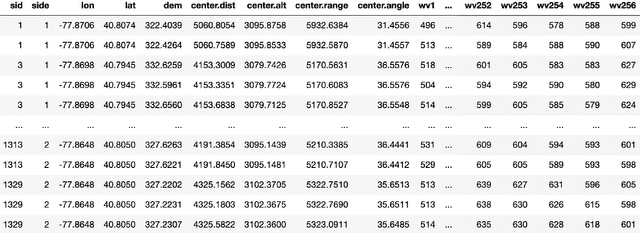Fangcao Xu
Ill-posed Surface Emissivity Retrieval from Multi-Geometry Hyperspectral Images using a Hybrid Deep Neural Network
Jul 17, 2021



Abstract:Atmospheric correction is a fundamental task in remote sensing because observations are taken either of the atmosphere or looking through the atmosphere. Atmospheric correction errors can significantly alter the spectral signature of the observations, and lead to invalid classifications or target detection. This is even more crucial when working with hyperspectral data, where a precise measurement of spectral properties is required. State-of-the-art physics-based atmospheric correction approaches require extensive prior knowledge about sensor characteristics, collection geometry, and environmental characteristics of the scene being collected. These approaches are computationally expensive, prone to inaccuracy due to lack of sufficient environmental and collection information, and often impossible for real-time applications. In this paper, a geometry-dependent hybrid neural network is proposed for automatic atmospheric correction using multi-scan hyperspectral data collected from different geometries. The proposed network can characterize the atmosphere without any additional meteorological data. A grid-search method is also proposed to solve the temperature emissivity separation problem. Results show that the proposed network has the capacity to accurately characterize the atmosphere and estimate target emissivity spectra with a Mean Absolute Error (MAE) under 0.02 for 29 different materials. This solution can lead to accurate atmospheric correction to improve target detection for real time applications.
Using Long Short-Term Memory and Internet of Things for localized surface temperature forecasting in an urban environment
Feb 04, 2021



Abstract:The rising temperature is one of the key indicators of a warming climate, and it can cause extensive stress to biological systems as well as built structures. Due to the heat island effect, it is most severe in urban environments compared to other landscapes due to the decrease in vegetation associated with a dense human-built environment. It is essential to adequately monitor the local temperature dynamics to mitigate risks associated with increasing temperatures, which can include short term strategy to protect people and animals, to long term strategy to how to build a new structure and cope with extreme events. Observed temperature is also a very important input for atmospheric models, and accurate data can lead to better future forecasts. Ambient temperature collected at ground level can have a higher variability when compared to regional weather forecasts, which fail to capture the local dynamics. There remains a clear need for an accurate air temperature prediction at the sub-urban scale at high temporal and spatial resolution. This research proposed a framework based on Long Short-Term Memory (LSTM) deep learning network to generate day-ahead hourly temperature forecast with high spatial resolution. A case study is shown which uses historical in-situ observations and Internet of Things (IoT) observations for New York City, USA. By leveraging the historical air temperature data from in-situ observations, the LSTM model can be exposed to more historical patterns that might not be present in the IoT observations. Meanwhile, by using IoT observations, the spatial resolution of air temperature predictions is significantly improved.
 Add to Chrome
Add to Chrome Add to Firefox
Add to Firefox Add to Edge
Add to Edge